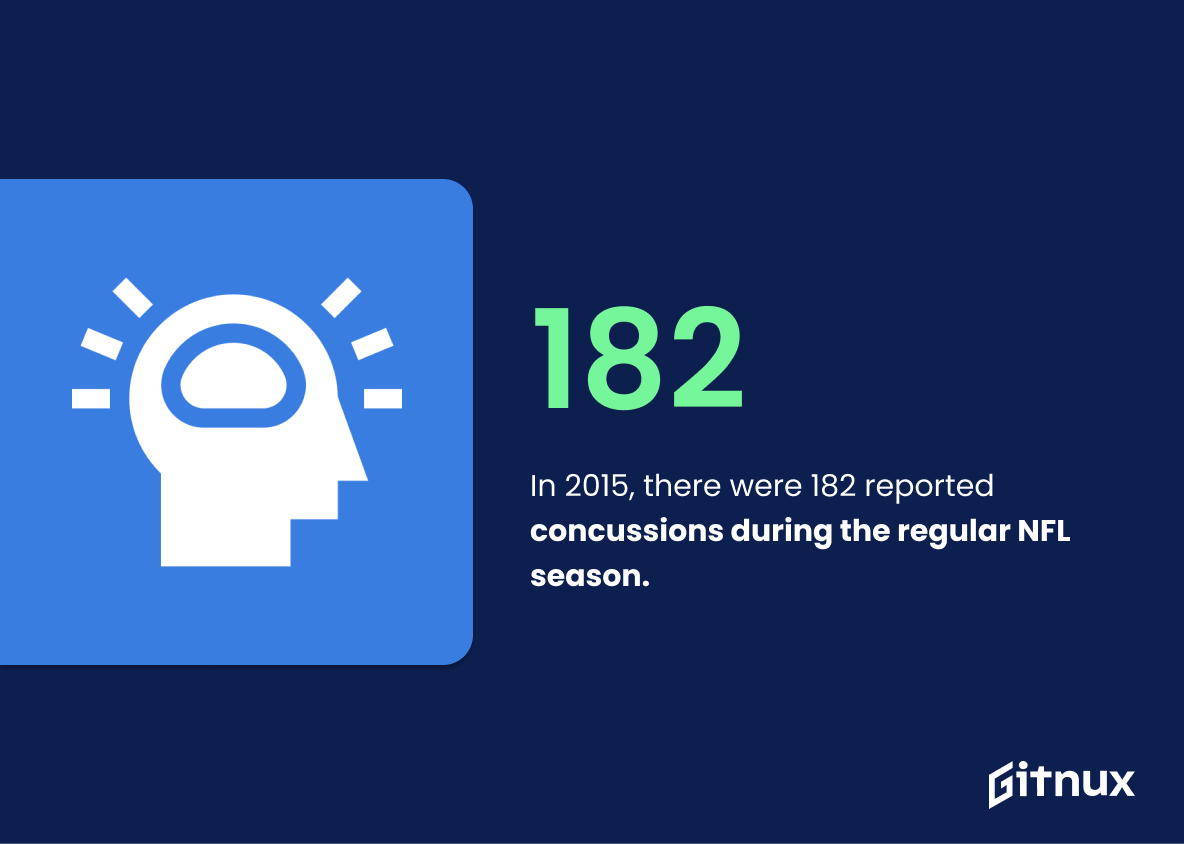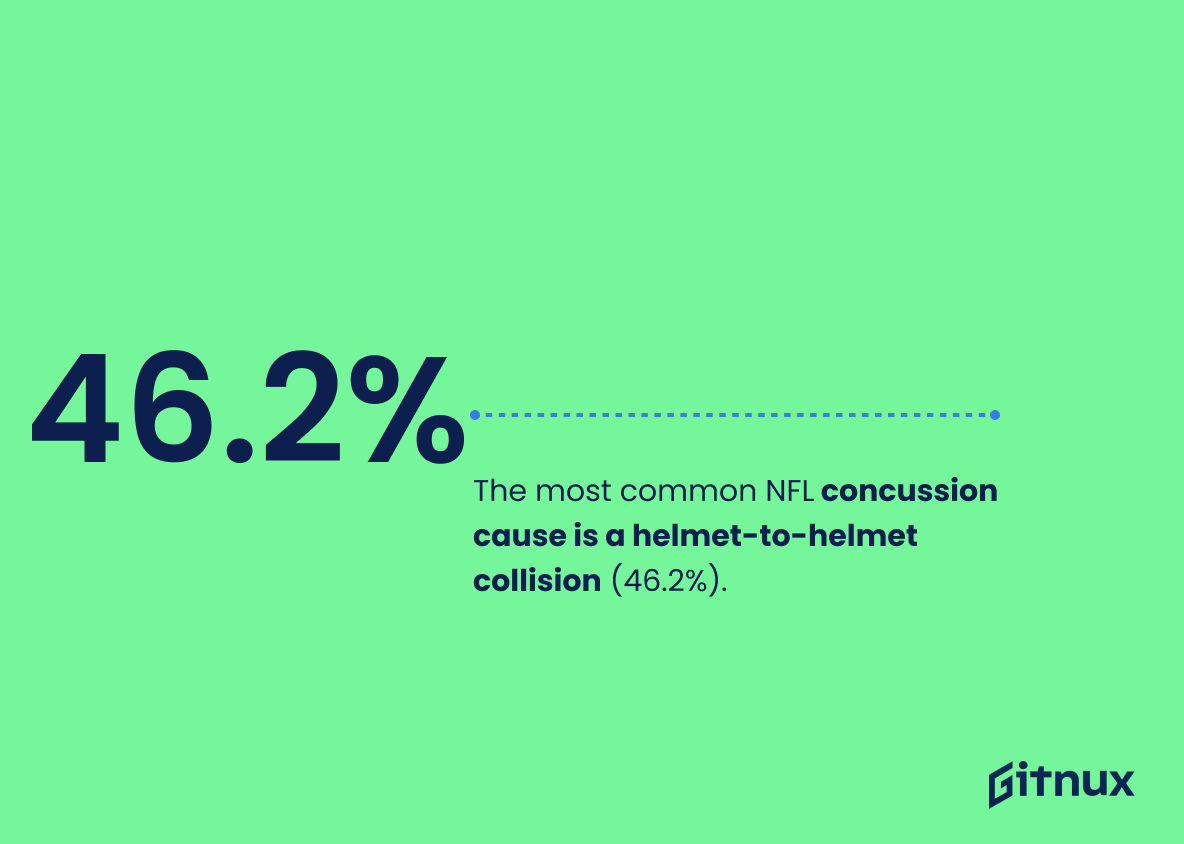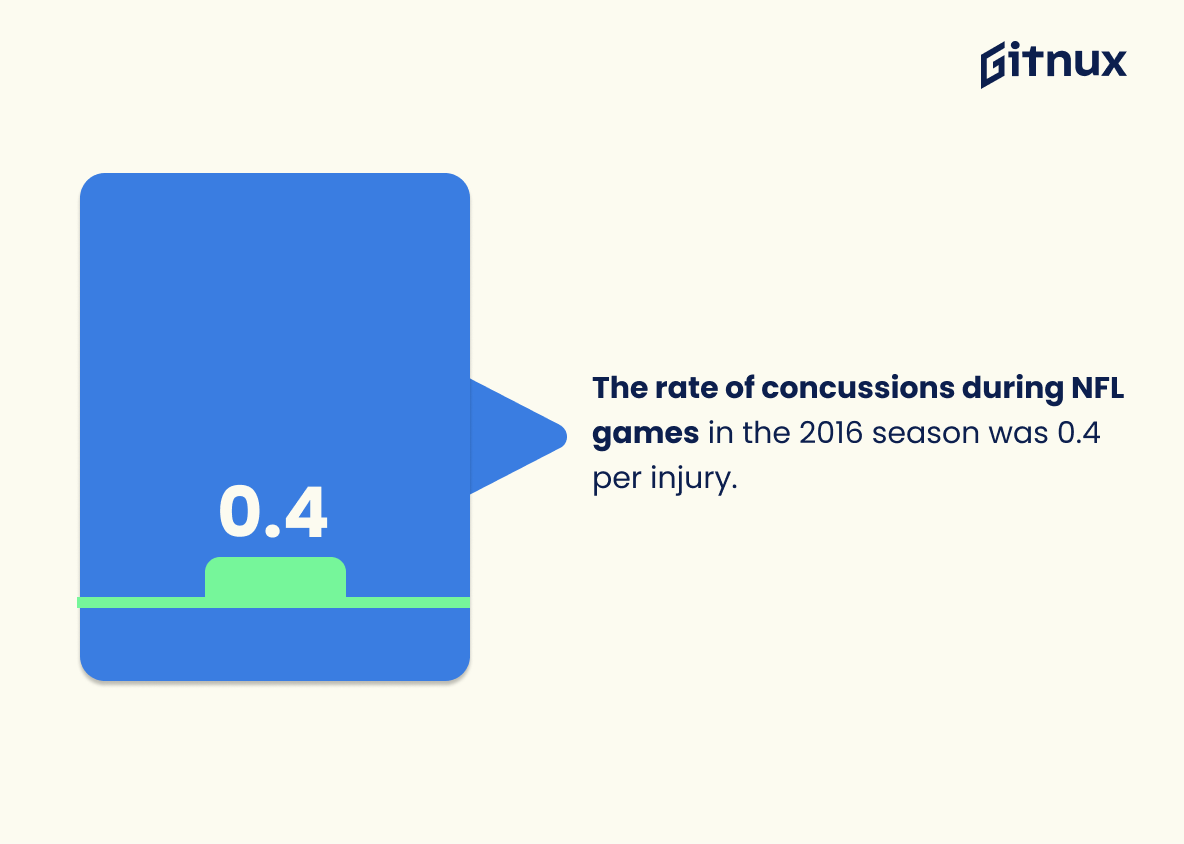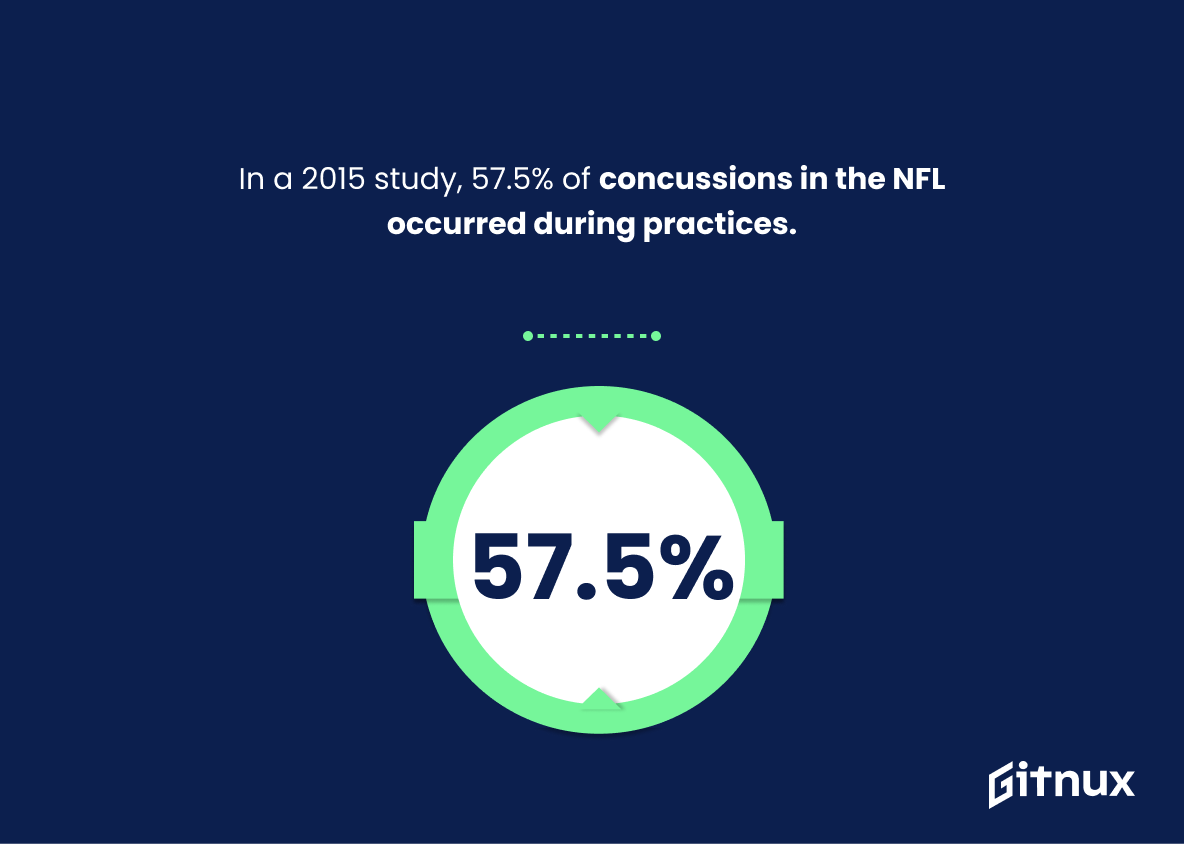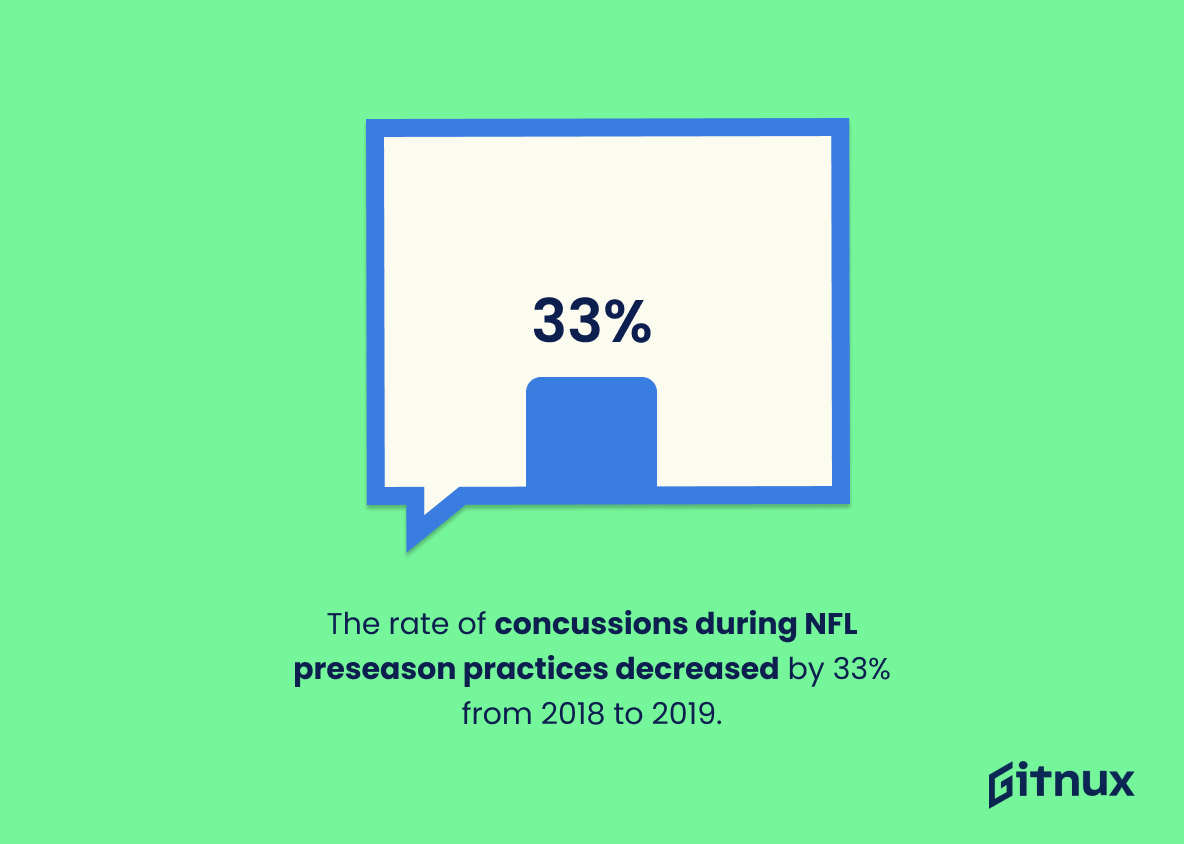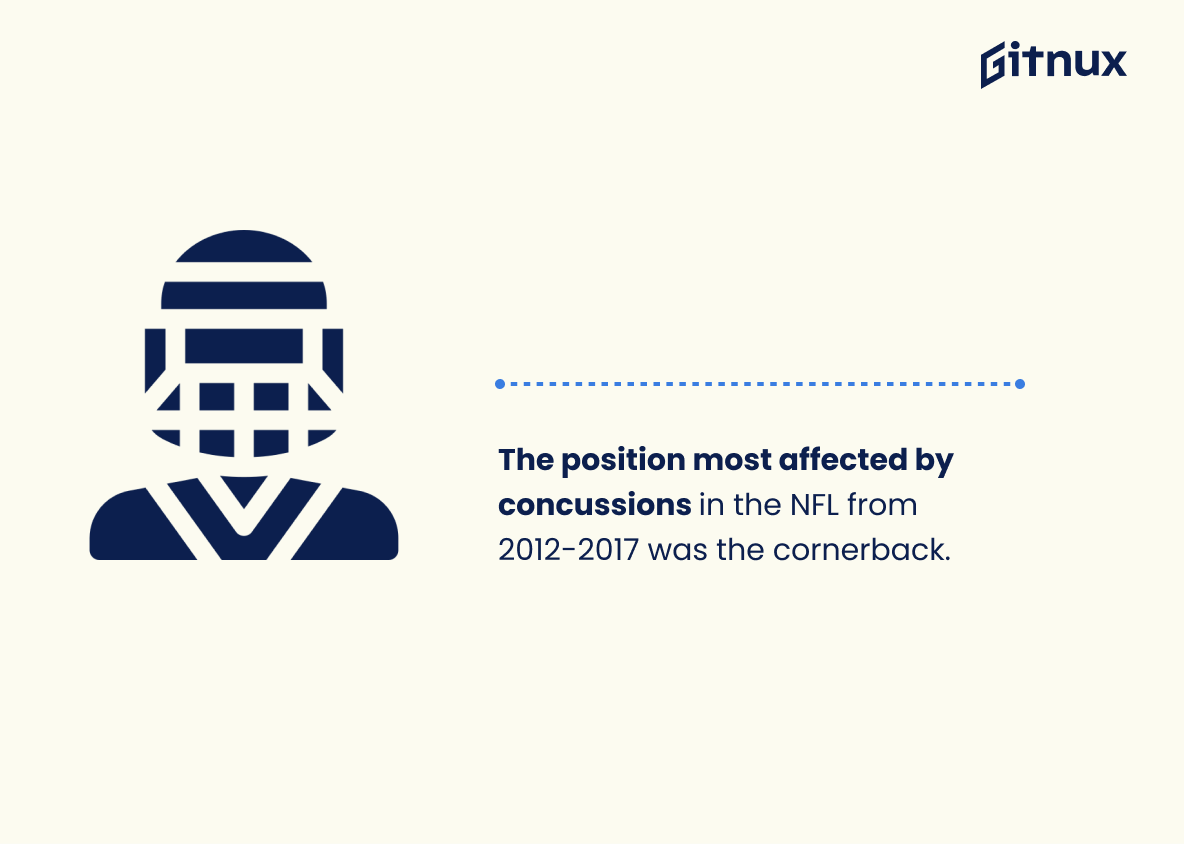The NFL has seen a steady increase in the number of reported concussions over the past few years. According to research, NFL players have a 28% chance of sustaining a concussion during their career and for every game approximately 11.8 concussions are reported. In 2017, there were 291 incidences of concussion while 214 diagnosed concussions occurred in 2018 and 224 in 2019 – an overall slight increase from 2018 to 2019. During 2015 preseason, it was estimated that 5.6% of players had sustained at least one concussion whereas between 2012-2017 offensive linemen suffered 240 cases on average per season with 16 days taken as an average return time after suffering such injury.
In addition, 47% of athletes who experienced head trauma did not miss any games due to this condition in 2018; however helmet-to-helmet collisions accounted for 46.2%, making them the most frequent cause for these injuries among all other causes combined (38%). Furthermore, 292 recorded incidents happened during 2020 regular season with 29 caused by helmet-to body contact alone whilst 0
This statistic is a stark reminder of the dangers of playing in the NFL. It highlights the fact that a significant portion of players are at risk of sustaining a concussion during their career, and that the issue of concussions in the NFL is a serious one that needs to be addressed.
An estimated 2017 regular NFL season had 291 incidences of concussion.
This statistic is a stark reminder of the prevalence of concussions in the NFL. It serves as a powerful illustration of the need for greater awareness and action to reduce the number of concussions in the league. It is a call to arms for all stakeholders to work together to ensure the safety of the players and the integrity of the game.
Concussions In The NFL Statistics Overview
In 2015, there were 182 reported concussions during the regular NFL season.
This statistic is a stark reminder of the prevalence of concussions in the NFL. It serves as a reminder that the issue of concussions in the NFL is far from resolved and that more needs to be done to protect players from the long-term effects of head injuries. It is a call to action for the NFL to take further steps to ensure the safety of its players.
47% of NFL athletes who reported concussions did not miss game time in 2018.
This statistic is a powerful indicator of the prevalence of concussions in the NFL and the lack of attention they are receiving. It shows that despite the high rate of reported concussions, a majority of NFL athletes are still playing through the injury, which can have serious long-term consequences. This statistic is a reminder that more needs to be done to protect athletes from the dangers of concussions and to ensure that they receive the proper medical attention when they do suffer from one.
The most frequent concussion-causing event in the NFL is helmet-to-helmet collision (46.2%).
This statistic is a stark reminder of the dangers of playing in the NFL. It highlights the fact that the most common cause of concussions in the league is a direct result of the physicality of the sport. It serves as a warning to players, coaches, and fans alike that the risk of concussion is ever-present and should be taken seriously.
The rate of concussions during NFL games in the 2016 season was 0.4 per injury.
This statistic is a powerful indicator of the prevalence of concussions in the NFL. It shows that, despite the league’s efforts to reduce the risk of head injuries, concussions remain a serious issue in the sport. This statistic is a reminder that more needs to be done to protect players from the long-term effects of head trauma.
In a 2015 study, 57.5% of concussions in the NFL occurred during practices.
This statistic is a powerful indicator of the prevalence of concussions in the NFL, particularly during practices. It highlights the need for increased safety measures and protocols to be implemented in order to reduce the risk of concussions in the NFL. This statistic is an important piece of information to consider when discussing the issue of concussions in the NFL, as it provides a clear picture of the current state of the league.
38% of retired NFL players in a 2016 study showed signs of traumatic brain injury.
This statistic is a stark reminder of the dangers of playing in the NFL. It highlights the prevalence of traumatic brain injury among retired NFL players, and serves as a warning to current players of the potential long-term consequences of playing in the league. It also serves as a call to action for the NFL to take further steps to protect its players from the risks of concussions.
The rate of concussions during NFL preseason practices decreased by 33% from 2018 to 2019.
This statistic is a testament to the NFL’s commitment to player safety, as it shows that the league’s efforts to reduce the rate of concussions during preseason practices have been successful. It is a positive sign that the NFL is taking the issue of concussions seriously and is actively working to reduce the risk of injury to its players. This statistic is an important part of the overall picture of concussions in the NFL and should be included in any discussion of the topic.
The position most affected by concussions in the NFL from 2012-2017 was the cornerback.
This statistic is a powerful indicator of the prevalence of concussions in the NFL, particularly among cornerbacks. It highlights the need for increased safety measures to protect players from the potentially devastating effects of head injuries. Furthermore, it serves as a reminder of the importance of concussion awareness and education for all players, coaches, and staff in the NFL.
In 2017, NFL concussions increased by 13.5% from the previous year.
This statistic is a stark reminder of the dangers of playing in the NFL. It highlights the need for increased safety measures to protect players from the long-term effects of concussions. It also serves as a warning to parents and coaches to be aware of the risks associated with the sport and to take the necessary precautions to ensure the safety of their players.
Conclusion
The statistics presented in this blog post demonstrate the prevalence of concussions among NFL players. The data shows that there is a 28% chance of sustaining a concussion during an NFL career, and approximately 11.8 concussions are reported for every game played. In 2018, 214 diagnosed concussions were recorded in the NFL while 292 injuries were reported in 2020.
Furthermore, helmet-to-helmet collisions accounted for 46.2% of all concussion cases between 2012 and 2017 with offensive linemen being most affected by these incidents (240). Additionally, 57.5% of all concussions occurred during practices rather than games and 38% of retired players showed signs of traumatic brain injury according to one study from 2016; however, it should be noted that the rate decreased by 33%. Finally, 2017 saw an increase in overall numbers compared to 2016 at 13.5%.
References
0. – https://www.frontiersin.org
1. – https://www.nbcnews.com
2. – https://www.usatoday.com
3. – https://www.statista.com
4. – https://www.bmjopensem.bmj.com
5. – https://www.nflcommunications.com
6. – https://www.pubmed.ncbi.nlm.nih.gov
7. – https://www.ncbi.nlm.nih.gov
8. – https://www.thedenverchannel.com
9. – https://www.link.springer.com
